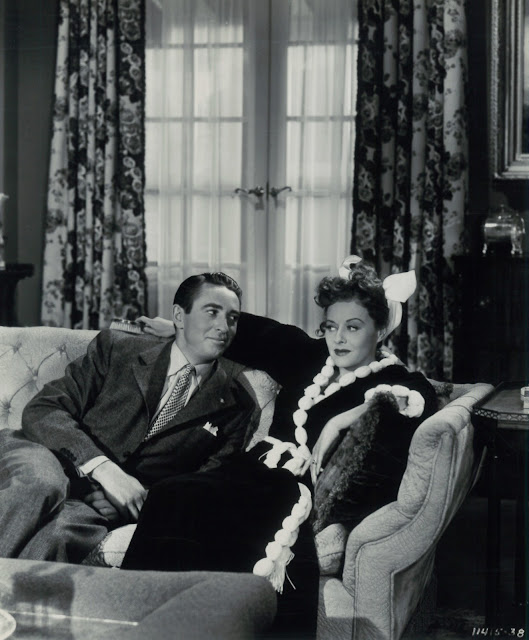Herewith a New Series ...
Ads and Oddities #1
Ads and Oddities proposes to be a gather place for what comes of closet cleans, peruse through stacks of kept images, dig among ancient advertising, whatever might fascinate and delight. Expect much unexpected in this and future entries.
KING SOLOMON’S MINES (1950) --- Pleasing announcement from Warner Archive is King Solomon’s Mines coming on Blu-Ray, sourced we are told from three-strip camera elements of Technicolor as rendered on African location in 1950. Like Ivanhoe of last year’s disc release, Solomon has gone long as less than what it could ideally be, news of Blu among most exciting to come so far in 2023. Above pen-ink rendering of the Liberty’s front is handiwork of noted artist Bradley F. Davis, who here surpassed himself for depicting North Wilkesboro “Showplace of Hits” on Christmas Day, 1950, King Solomon’s Mines fruit of owner Ivan Anderson’s close and ongoing relationship with Metro and oft-early recipient of their best output. In fact, we got King Solomon’s Mines as part of holiday rollout after New York November play which was exclusive as on “pre-release" terms. Davis art went out in 1985 as my Christmas card, first response from a friend who reported being at the Liberty on 12/25/50 opening day, at age ten. Screen spectacle sometimes spread outward to streets where all knew specialness of an attraction and viewed same as holiday happening equal to Santa touching down. Re Liberty and what made it ideal small town showcase, observe what artist Davis did with that same front in 1956 when Blackboard Jungle showed up, an attraction to prove even bigger than King Solomon’s Mines, if produced at a fraction of Solomon’s cost. Davis spent childhood at the Liberty, jumps ahead of me for seeing House on Haunted Hill there on first-run, him telling it in guise of “Brickadoodle” at Greenbriar circa 2019. He and I spent many a Saturday at the Liberty seeing likes of Rasputin, the Mad Monk, For a Few Dollars More, The Devil's Bride, too many to count. Bravo to Brick as great visual recorder of the Liberty in its showgoing prime.
HOLLYWOOD CAVALCADE (1939) --- Hollywood tells its own history, a first as others kept filmland fables within time perimeters to serve A,B, then C, narrative. Hollywood Cavalcade goes from teens to invention of talk via fictional Don Ameche, pioneer after Sennett with dash of Griffith, and Alice Faye, Keystonish girl who'll season via suffer for love and dramatic art. Books told how movies came to be and eventually prosper, Terry Ramsaye’s most readable of them. Hollywood Cavalcade hews to model that was Alexander’s Ragtime Band, major Fox success of a previous year. Having seen latter could save effort watching this, for bumps are same, along with cast, Alexander’s Faye marrying Ameche because she can’t have Tyrone Power, then for Cavalcade wed to Alan Curtis because Ameche won’t be bothered. Thus slags a second half, fun of Hollywood Cavalcade spent by perky leads living epoch when slapstick was king, latter simulated so 1939 could see what joy they had been missing. Selling of Hollywood Cavalcade was built round knockabout, as who wasn’t game for chases and pie fighting done again, even if by comics with no past relation to custard like Buster Keaton, him around eternity enough to make pies a likelihood from his past. Hollywood Cavalcade runs gamut neither fish nor fowl, promise of comedy nulled by rise then fall for Ameche, Faye not invited to sing as most then would expect. One of “1001 Yesterdays” is evoked by Al Jolson, playing himself in The Jazz Singer, not Fox’s property so Al is obliged to fake it. What sustains is the slapstick, lovingly applied by highlights director Malcolm St. Clair, still around from silent days and enjoying we hope, along with Keystone veterans, this late stroll down Memory Lane. Ad shown was back cover of LIFE magazine for October 9, 1939. You could frame it and fool lookers to think it a fine art print, so good was reproduction in lavish LIFE at a circulation peak.
THE BLACKHAWK LIBRARY IN OUR LIBRARY --- Were there such thing as a Blackhawk collectible, this bookmark would surely be it. By some miracle, our public library purchased a collection of the company's 8mm reels for circulation among North Wilkesboro populace. Year was 1970, point by which but a handful of Blackhawk subjects had come into my hands, nothing like dazzling variety suddenly within walk distance of home. Most Chaplins were here, also Laurel/Hardy, Langdon, Keaton, what little of Lloyd BH offered. Given no notice such windfall might come, these were like miracles raining from sky. Imagine turning corner from Frankenstein Must Be Destroyed at the Liberty to then borrow 1914’s Caught in a Cabaret … heady stuff of dreams. Brick Davis of above art immortality could tell you plenty of seismic effect our library acquisition had, being opportunity as well to see Griffith Biographs, Doug Fairbanks in an abbreviated Mr. Robinson Crusoe, so much more I had not yet worked up to as a private collector. The library’s inventory did not sit on shelves. You had to ask to see the selection. How did such Nirvana come to be? I envisioned a Blackhawk rep walking in one day with his sample case to close the earth-shaking sale. Had I but been there to greet him! Found out later that other North Carolina libraries had a similar Blackhawk arrangement. In fact, the deal was done in Raleigh and partner branches were told to expect shipment of the narrow celluloid. Imagine initial befuddlement at Ben Turpin comedies coming through otherwise staid doors. For myself it was like an instant collection with easy access and far better than what I could ever hope to accumulate. So what finally became of our local archive? A young collector I knew in the early nineties fell heir to a by-now tattered lot, the library having long since gone over to video cassettes and happy to dispose of a now bewhiskered format.















































